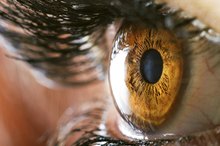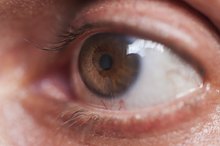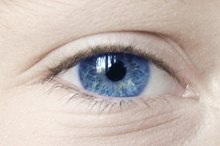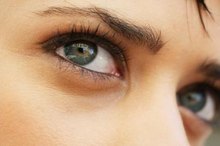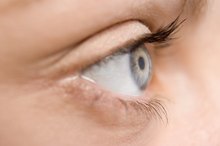Can You Tell If You Have High Cholesterol by an Eye Exam?
Your body makes its own cholesterol, which it needs to function properly; however, cholesterol is also found in many foods. If you consume excess cholesterol, this waxy substance may build up in your arteries, narrowing them and putting you at an increased risk for serious health conditions such as heart attacks and strokes. Blood tests will determine your blood cholesterol levels, but during an eye exam, your doctor may detect warning signs.
Eyelids
Some people who have high cholesterol have small pockets of fat that deposit under the skin. These deposits, called xanthelasmas, can occur on the eyelids 2. They have a yellowish color and may appear slightly raised. These areas do not require treatment and will not cause discomfort or any other symptoms. Once a xanthelasma appears, the discoloration will remain unless surgically removed 2. High cholesterol is not the only reason a xanthelasma may occur, but if your eye doctor notes xanthelasma growth, she should inform your general health care provider since this could indicate a possible cholesterol problem.
Cornea
High Cholesterol Effects on Eyes
Learn More
During an eye exam, your doctor will study the front surface of your eye including the cornea. This part of the eye is the clear, dome-shaped covering over the iris. Some people with high cholesterol may notice a white ring around the outer edge of the cornea, but the color change may also seem as if the iris has the discoloration 3. This white ring, called an arcus, may appear without the presence of high cholesterol 3. The arcus can appear as part of the natural aging process of the eye, but a person of any age can have an arcus from high cholesterol levels. The arcus will not cause pain, discomfort or vision changes. An arcus is a permanent change and treatment will not resolve the discoloration.
- During an eye exam, your doctor will study the front surface of your eye including the cornea.
- The arcus can appear as part of the natural aging process of the eye, but a person of any age can have an arcus from high cholesterol levels.
Back of Eye
As part of a thorough eye examination, your eye doctor will dilate you pupils and examine the back of your eye. In most cases, your doctor cannot detect visible signs of high cholesterol in the back of your eyes, but certain conditions, such as an occlusion in a blood vessel of the retina, could indicate a possible cholesterol problem. Your retina is the lining on the back of your eye, and the vessels leading into and away from the retina may have a blockage, possibly a piece of cholesterol that came loose from the lining of a blood vessel. This condition may cause sudden vision loss, and, in some cases, vision will not improve. If your eye doctor notes these or other changes to your retinal vessels, she may recommend checking your cholesterol levels.
- As part of a thorough eye examination, your eye doctor will dilate you pupils and examine the back of your eye.
- In most cases, your doctor cannot detect visible signs of high cholesterol in the back of your eyes, but certain conditions, such as an occlusion in a blood vessel of the retina, could indicate a possible cholesterol problem.
Considerations
How Accurate Is the Finger Prick Cholesterol Test?
Learn More
Your eye doctor cannot determine that you have high cholesterol from your eye examination, but she can detect warning signs that point to the possibility. If your eye doctor notes any potential signs that you may have high cholesterol, she will inform your general health practitioner of the findings during your exam. Your health care provider will most likely order blood tests that will provide your cholesterol levels and help determine any necessary treatment or dietary changes.
Related Articles
References
- National Heart Lung and Blood Institute; What is Cholesterol?; September 2008
- The Merck Manuals Online Medical Library: Xanthelasma
- Science Daily; High Blood Pressure, High Cholesterol May Be Associated with Retinal Vascular Disease; May 2008
- Centers for Disease Control and Prevention. Heart disease facts. Updated November 28, 2017.
- Harada-Shiba M, Arai H, Ishigaki Y, et al. Guidelines for diagnosis and treatment of familial hypercholesterolemia 2017. J Atheroscler Thromb. 2018;25(8):751-70. doi:10.5551/jat.CR003
- American Heart Association. Heart-health screenings. Updated March 22, 2019.
Writer Bio
Kate Beck started writing for online publications in 2005. She worked as a certified ophthalmic technician for 10 years before returning to school to earn a Masters of Fine Arts degree in writing. Beck is currently putting the finishing touches on a novel.
